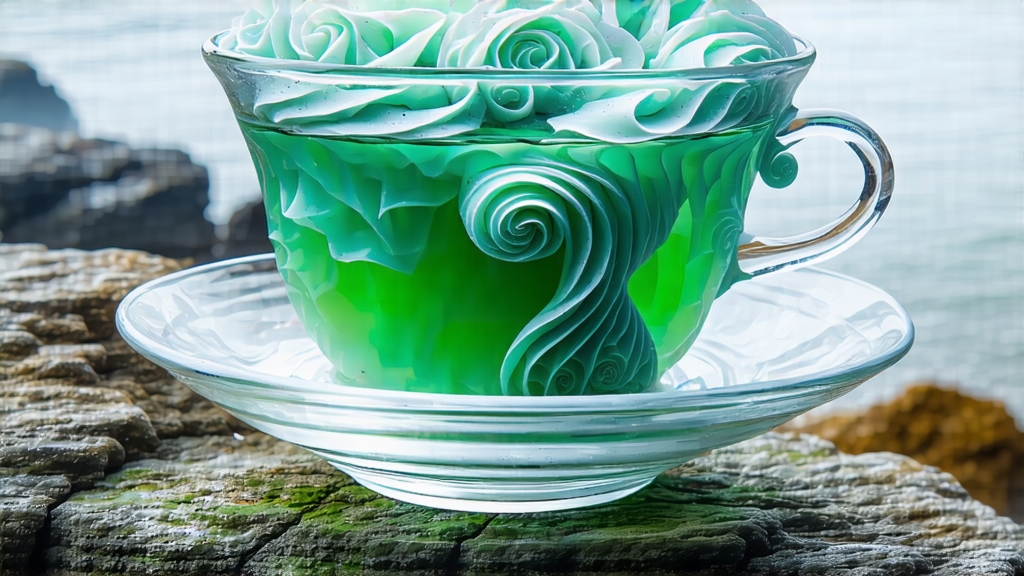
Tucked between the mist-capped hills of Dongting Mountain and the wave-lapped shores of Lake Tai in Jiangsu Province, Biluochun—literally “Green Snail Spring”—has been seducing tea lovers since the late Ming dynasty. Legend claims a tea picker startled by a sudden hornless dragon hid her half-filled basket among wild peach trees; overnight the buds absorbed the floral vapors, gifting the finished leaf an unforgettable fragrance. Whether myth or marketing, the story captures the essence of Biluochun: delicacy born of microclimate, meticulous craft, and the fleeting moment when winter loosens its grip on the lower Yangtze.
History
Imperial records first name the tea “Xia Sha Ren Xiang” (“Scary Fragrance”) in 1699, praising its potency. The Kangxi Emperor, touring the south, found the moniker vulgar and rechristened it Biluochun for its spiral shape and early-spring harvest. By the Qianlong era it ranked among the gong cha (tribute teas) shipped to Beijing in silver-lined chests. Foreign merchants encountered it in the 1850s through Shanghai’s burgeoning tea houses, where its peach-and-milk perfume earned the nickname “Taihu Pearl” in Victorian ledgers. Today only about 1,200 mu (80 hectares) of the original Dongting Dongshan terroir remain under strict geographic-indication protection; every kilo of authentic lake-shore Biluochun is tracked from bush to cup.
Micro-terroir
The Taihu microclimate is the invisible co-crafter. Morning lake mist refracts sunlight into soft, cool rays that slow photosynthesis, stacking amino acids—especially L-theanine—while keeping tannins in check. Night temperatures drop sharply, locking in volatile floral compounds. The mountain’s weathered granite soil is acidic (pH 4.8–5.5) and laced with quartz; drainage is instant yet moisture-retentive, forcing roots to dive deep for minerals that translate into a sweet, mineral finish. Wild peach, plum, and loquat trees interplanted among tea hedges act as aromatic neighbors; their spring blossoms shower nectar that literally rains onto the leaf surface, adding a subtle osmanthus-peach top note impossible to replicate elsewhere.
Cultivars
Although the classic clone is Dongting群体小叶种 (small-leaf landrace), three authorized variants now coexist:
- Wuniuzao (“Crow’s Beak Early”) – harvests seven days before Qingming, lighter body, magnolia nose.
- Chunücha (“Spring Maiden”) – picked only by women under 25, using bamboo tweezers to avoid skin oils; prized for ultra-silky texture.
- Xiangbicha (“Fragrant Green”) – bred for frost resistance on north-facing slopes, yielding a more vegetal, asparagus profile.
Each cultivar is still finished with the identical 10-step craft, ensuring the trademark spiral.
Plucking Standard
Authentic Biluochun is a single-bud-with-one-expanding-leaf, plucked when the bud is 1.5–2 cm—what locals call “sparrow’s tongue.” Picking starts at 5 a.m. when dew weighs down the shoot, preventing oxidation en route to the village workshop. Daily quota for a top-tier picker: 600 g fresh leaves, roughly 14,000 snippets, enough to yield 100 g finished tea.
Craft: The Ten Motions
- Withering – leaves are laid 2 cm thick on perforated bamboo trays set in shaded courtyards for 2 hours; lake breeze reduces surface moisture by 15 %.
- Primary firing – woks heated to 180 °C receive 250 g batches; the maker tosses, presses, and rolls the leaves against the iron wall for 3 minutes, killing green enzymes while locking in jade color.
- First spiral – temperature drops to 80 °C; fingers form a loose cage, rolling leaves into strips.
- Re-firing – 70 °C, 5 minutes; moisture falls to 30 %.
- Second spiral – the critical “strip & twist”: palms slide forward, forcing the leaf tip to curl around the bud like a snail shell.
- Cooling – 10 minutes on rush mats; residual heat redistributes moisture.
- Third firing – 60 °C, leaves now whisper against the wok, emitting a milky aroma.
- Final spiral – the “thousand-rub circle”: thumb